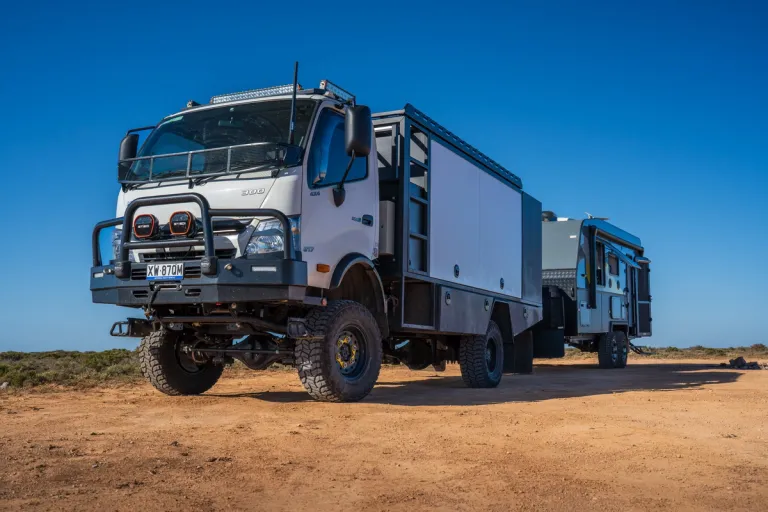I’ve got a saying: “Mud is for millionaires!”
There’s a reason this saying came about—driving in mud can get seriously expensive. I’ve learned the hard way over the years, with alternators failing, brakes wearing out, and various components getting wrecked on different vehicles, usually because of mud.
Mud gets into everything, acting like a mix of wet and dry sandpaper. It can destroy coatings, seals, and pretty much any component it touches.
But let’s be honest, it’s also a lot of fun.
The temptation to drive straight through a muddy section rather than going out of your way to avoid it is hardwired into many of us. The thrill of testing your 4WD’s capability is front and centre in most 4WDers’ minds. And when your mates or kids are egging you on… well, you just have to go for it!

how to drive in mud
Until it all goes wrong, and you get stuck… We’ve all been there, and if you haven’t yet, as a 4WDer, it’s probably only a matter of time.
So, let’s take a minute to figure things out and see what you can do to reduce the risk of getting bogged down in the mud.
The first thing I need to stress is the importance of good tyres and proper tyre pressures. It’s absolutely crucial to have your vehicle set up with tyres that match the kind of driving you’ll be doing.
Most people wouldn’t walk across a muddy track barefoot, worried about slipping and sliding all over the place. Though, I have to admit, I do know a few people who would!
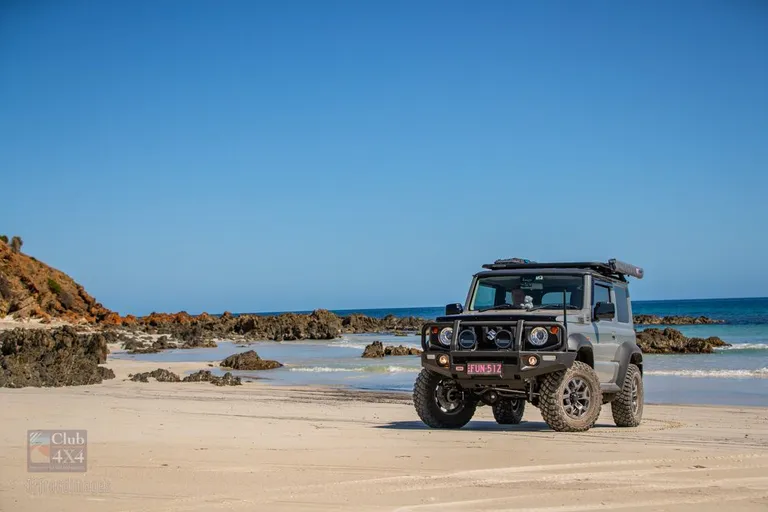
suzuki jimny on kangaroo island beach driving
A good set of off-road tyres should be a top priority for anyone planning to venture off-road. And if you expect to spend a fair bit of time in the mud, it's definitely worth investing in mud tyres.
Over the years, we've tested numerous tyres and have found the BFG KM3s to be particularly impressive. While primarily a mud tyre, the KM3s have proven to be exceptionally versatile, performing well across various terrains including sand, rock, and even on bitumen. We've run several sets on our 79 Series for nearly 300,000 kilometres, as well as on our older 60 Series, affectionately known as “the Sandy 60,” and on my wife’s Suzuki Jimny. Throughout this extensive use, not only have we avoided punctures, but these tyres have also consistently handled challenging muddy conditions with ease.
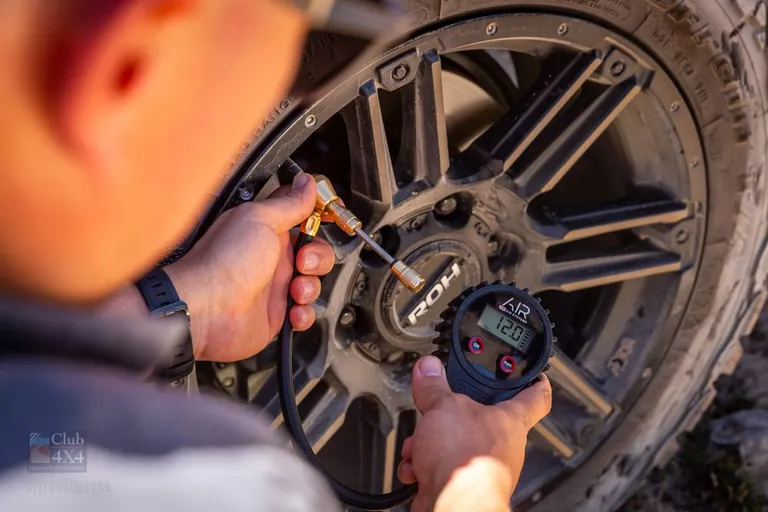
arb tyre deflator
Adjusting your tyre pressures in the mud gives you a longer footprint at each corner, providing better traction and allowing the tyre to flex its tread over slippery terrain. This lets you steer in the direction you want, rather than being at the mercy of the track’s hidden obstacles. A standard tyre, on the other hand, is more likely to slip around and follow the track’s path.
Before tackling a muddy hole like the one in this image with my mate Deano from 4X4 Australia, it’sa good idea to check the depth using a stick from the side of the track.

landcruiser 79 series muddy track off road
So, what exactly should you be looking for when approaching a section of muddy water?
Firstly, consider the depth. Are the wheel tracks deeper than you’re comfortable driving through? Will your vehicle be able to cross this muddy section without water getting inside?
Next, check the depth in the middle of the track. Could you end up getting hung up on your diff or transfer case? This can be a real problem, as the tyres will lose downforce if the weight is supported by the underside of your vehicle.
Lastly, think about the base where your tyres will be travelling. Is it a hard base with decent traction, like gravel, or is it a thick, sloppy mess?
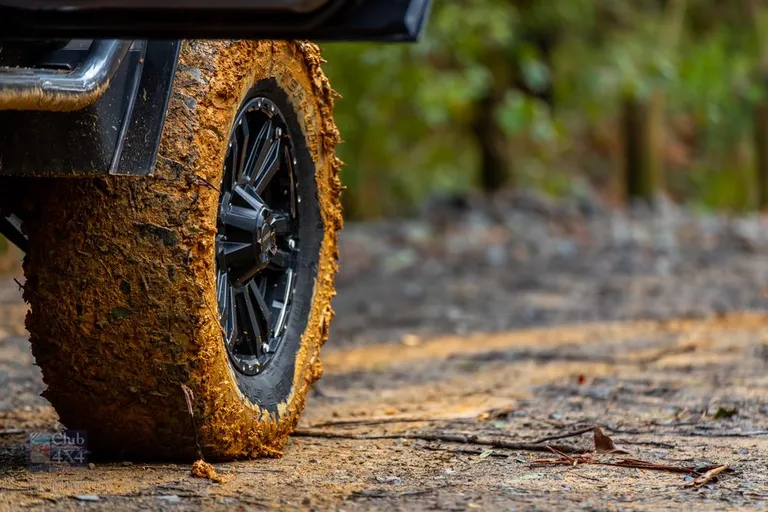
muddy tyres driving offroad
If it’s a thick mess, you’lllikely find it much tougher going as you travel through, so it’s worth reassessing the depth at the edges and the centre of the track.
You should also check for obstacles in the water. Sometimes, people who get stuck will use logs or rocks in the wheel tracks to gain extra height and traction. These hidden obstacles could damage your vehicle or, at the very least, restrict your mobility as you try to make your way out.
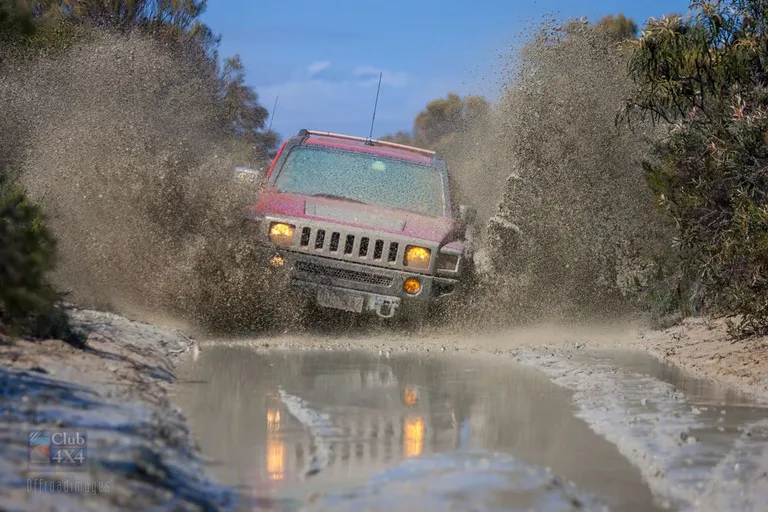
4wd boggy mud hole offroad driving
Preparation is key when travelling through deep mud. It makes sense to have your recovery gear within easy reach—the last thing you want is to get stuck and then think, "Hmm, where’s the snatch strap and shackles?"
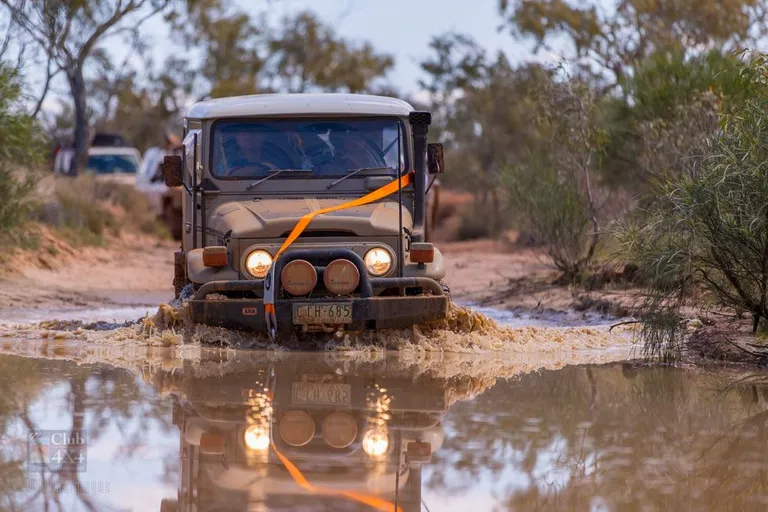
preparing with a snatch strap before driving a mud hole
You might want to attach the strap to the recovery point beforehand and coil the remaining length on top of your vehicle’s bull bar, securing it with a bit of electrical tape. This way, if you do need it, someone can quickly grab the strap, pull it free from the bar, and start the recovery before muddy water gets into your vehicle.
Another good tip is to quickly wipe down all your door rubber seals to ensure they’re sealed against water getting in if you find yourself bogged.
Now, not all mud is created equal. Be especially cautious on salt lakes, where the mud can be bottomless. In these areas, running lower tyre pressures is crucial to spread the load across the surface and improve traction.
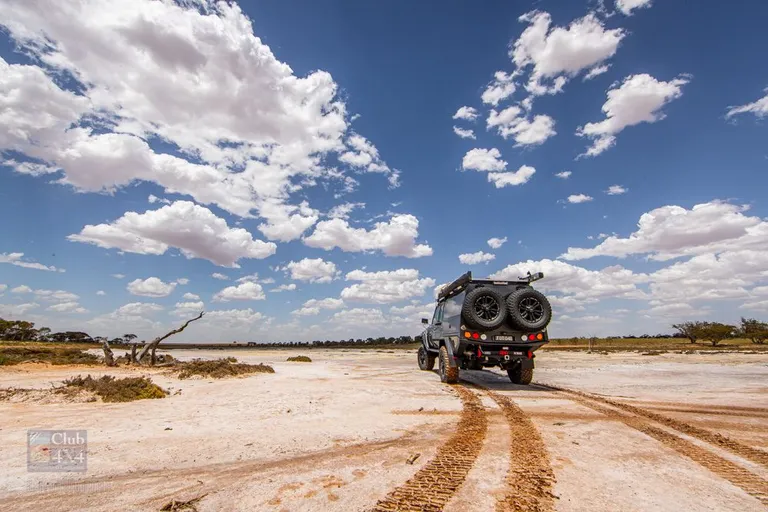
beach driving offroad 4wd
When you get home after your trip, don’t just clean the outside of your vehicle. Take the time to clean the parts you can’t see, especially underneath the vehicle. These components will thank you for the extra care, you’ll face fewer servicing costs, and you’ll feel proud of your investment.

cleaning underbody of 4wd
But hey, if you’re going to show off and demonstrate just how awesome your 4WD is, make sure you do it in style and have someone snap some photos for you!
“Cheers”
Michael Ellem | Offroad Images

michael ellem offroad images
The Campfire - Feedback
Just like sitting around the campfire, we would love to hear what you have to say.
Also… we will be featuring stories about photography tips and tricks, 4X4 preparation, build planning and maintenance, as well as featuring inspirational locations for you to visit in your 4X4. So please get involved and let us know what you’d like to hear about.
If you have any requests for stories to be featured in campfire or would like to provide feedback about this article, please send us a message on our social links…
Instagram: @offroadimages
Facebook: @offroadimages
YouTube: https://www.youtube.com/OffroadImages
Website: http://www.offroadimages.com.au
As 4X4 enthusiasts who live for the opportunity to create awesome imagery anywhere in Australia, we know that our vehicle assets are covered wherever we travel to create that shot, as we are insured by Club 4X4.




